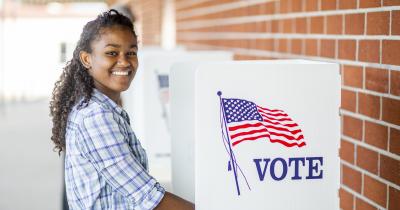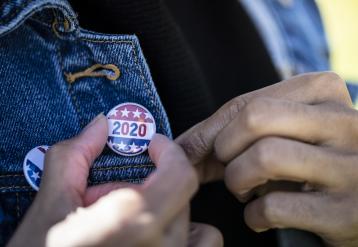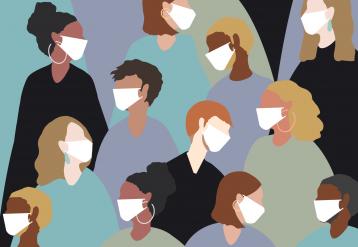
3 Ways to Build a Racially Inclusive Democracy During COVID-19 and Beyond
Now is a moment to fix longstanding inequities in our voting systems and build a more inclusive democracy, rather than solely seeking out emergency, short-term policy changes.

As with all crises, the COVID-19 pandemic has exposed the deep, racialized inequities in our access to the things we need to keep ourselves and our families safe: quality health care, paid sick time, a living wage, and, yes, democracy. Just as the virus is killing Black and brown people at disproportionate rates, it also threatens to disproportionately disenfranchise communities of color. Yet there are clear steps that states can and should take to ensure that Black and brown Americans—and indeed all Americans—can exercise their fundamental right to vote.
Any agenda to protect our elections in 2020 must address the structural exclusions that Black and brown voters have long faced in our democracy.
Any agenda to protect our elections in 2020 must address the structural exclusions that Black and brown voters have long faced in our democracy. Although the immediate crisis at hand has prompted some to call for emergency, short-term policy changes, we must also keep our eyes on the long game and pursue changes that correct the longstanding inequities in our voting system and build a more inclusive democracy.
The good news is there are clear and actionable ways to do so, which we lay out in more detail in our recent piece, How to Build a Racially Inclusive Democracy During COVID-19 and Beyond. Here are our top 3 recommendations, in a nutshell:
1. First, we must increase opportunities to register to vote.
Voter registration has long been weaponized to keep Black and brown voters from the franchise, and the barriers voters of color face to getting and staying registered to vote are only exacerbated by COVID-19. Neighborhood and community registration drives, which play an important role in registering voters of color, have been hampered, and government agencies where voters of all races are registered during routine transaction are shuttered. Online voter registration, same day voter registration, and relaxed deadlines for mail-in voter registration will help ensure that no voters, and especially no voters of color, are prevented from making their voices heard because they missed a voter registration deadline or were unable to update their registration.
2. Next, we must dramatically expand opportunities to vote by mail and make vote-by-mail systems racially equitable.
All eligible people should be able to vote by mail if they want, but for Black and brown communities, who are experiencing the highest infection and death rates, being able to vote by mail is a matter of life or death. To ensure all voters—especially the Black and brown voters who have always faced barriers to the ballot box—can cast a ballot that counts while keeping themselves and their loved ones safe, vote-by-mail systems should mail all registered voters postage-paid vote-by-mail ballots, eliminate notary and witness signature requirements, install numerous drop-boxes in prominent locations, institute a uniform and transparent process for correcting any problems with ballots, and provide adequate support for limited English-proficiency voters and voters with disabilities, among other provisions.
3. Finally, we must preserve and secure in-person voting, both during an extended early voting period and on Election Day.
Longstanding structural inequalities mean that Black and brown voters face higher barriers to voting by mail, and these voters must have the chance to cast a ballot in person if they cannot access mail voting or simply prefer to vote in person. In-person voting plans should include at least 30 days of early voting, sufficient polling locations to serve the population—especially in Black and brown neighborhoods that have historically faced poll closures—polling places set up to allow voters and poll workers to engage safely, and expanded curbside and drive-through voting, among other protections.
These changes respond to the current crisis while also making us more resilient for the next one. If we take the right steps now, we can emerge from this crisis with a stronger, more inclusive democracy.



